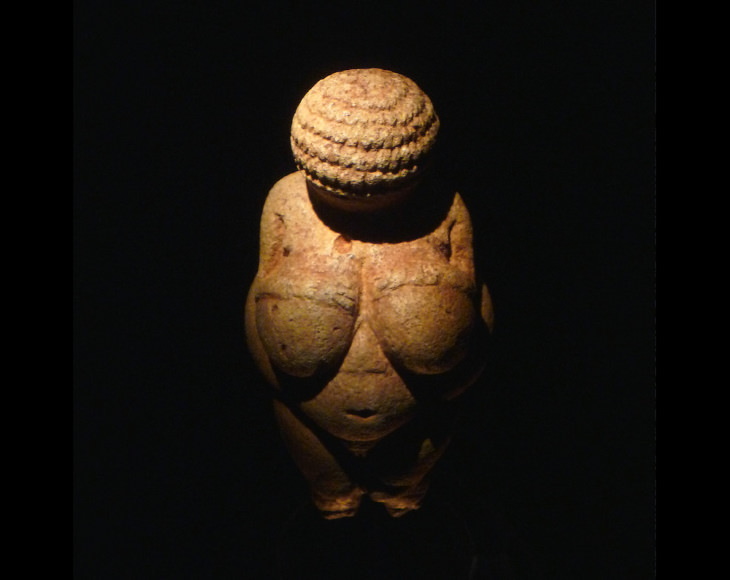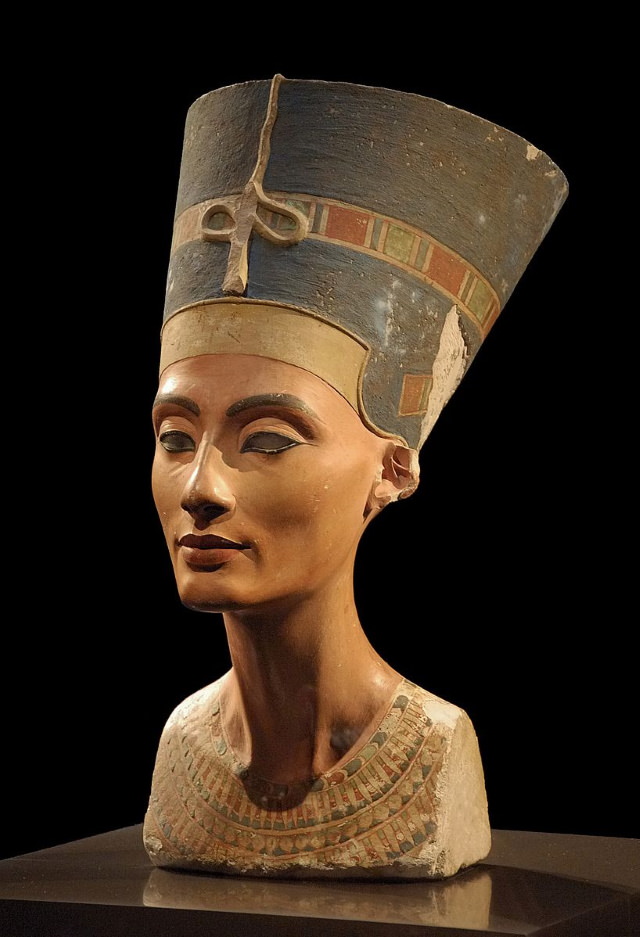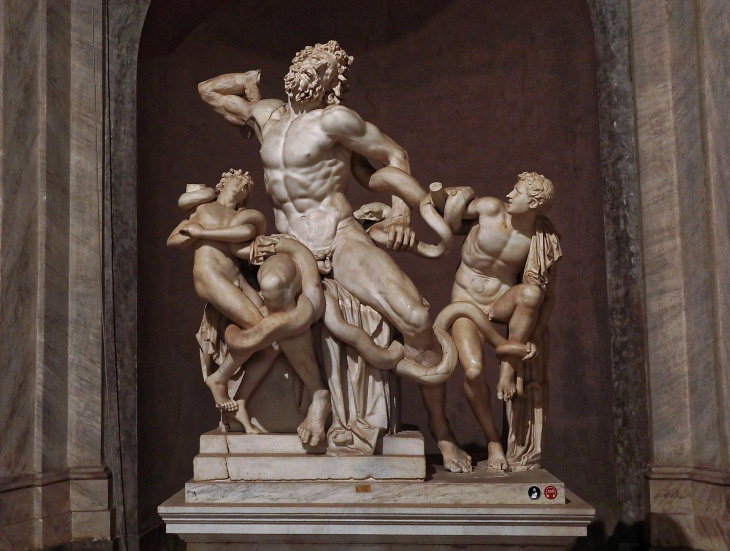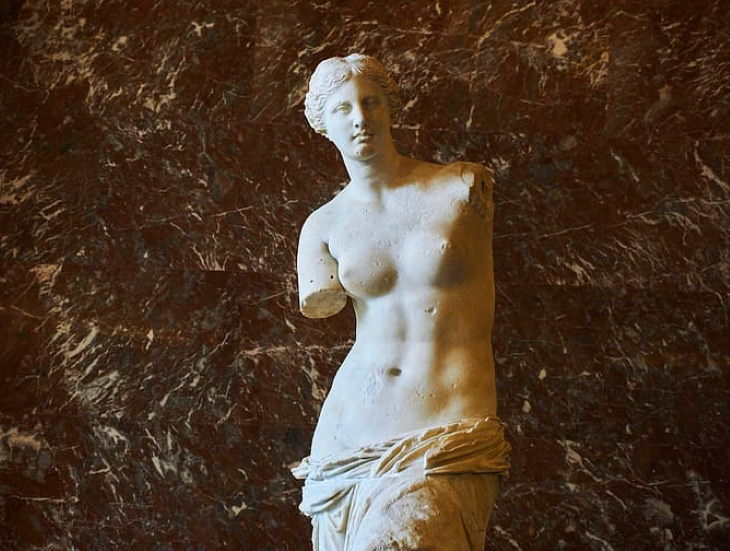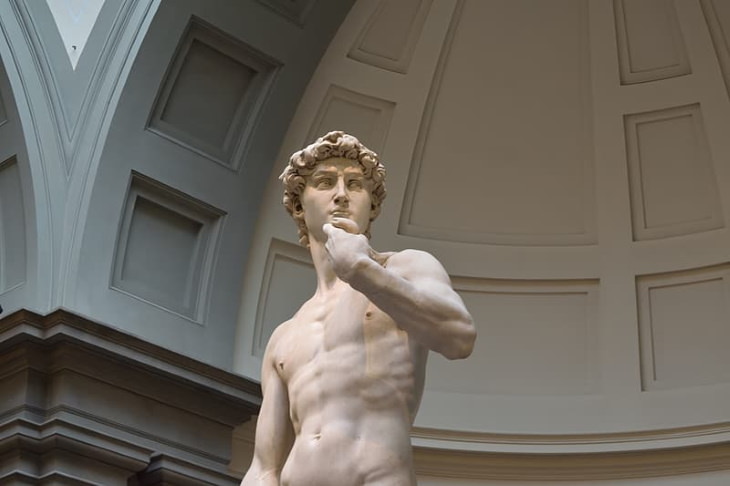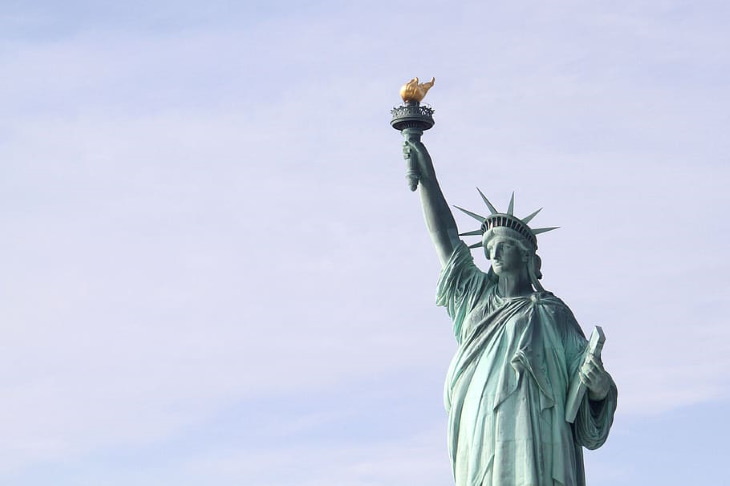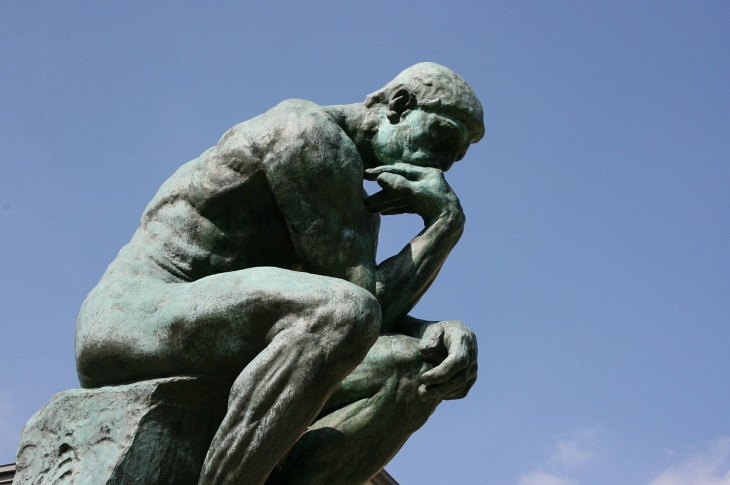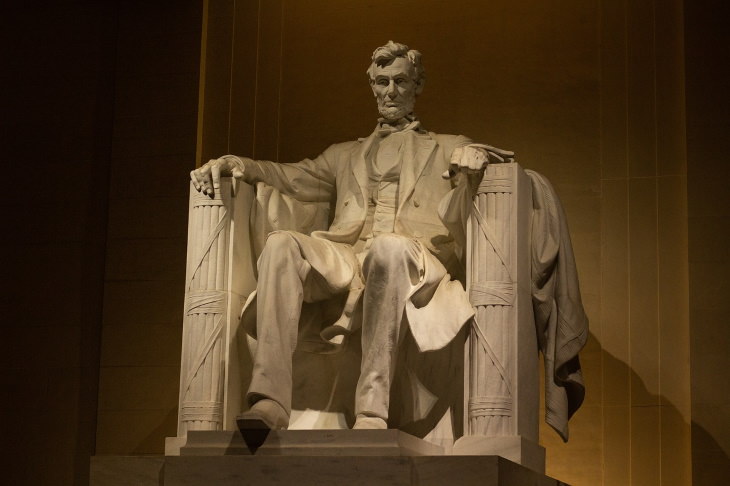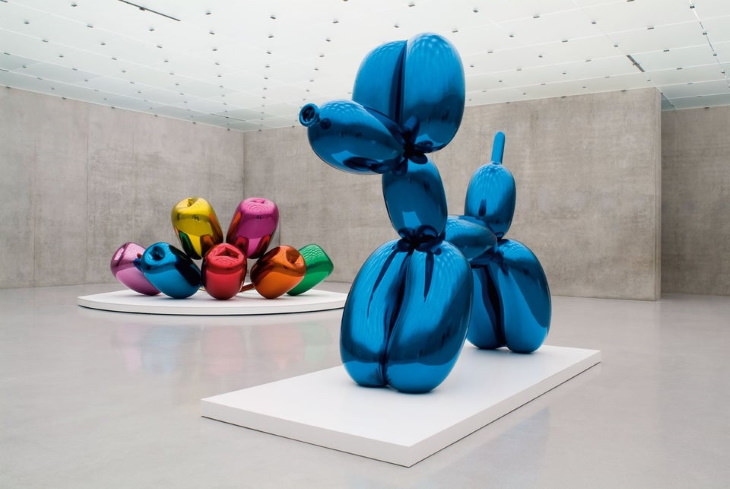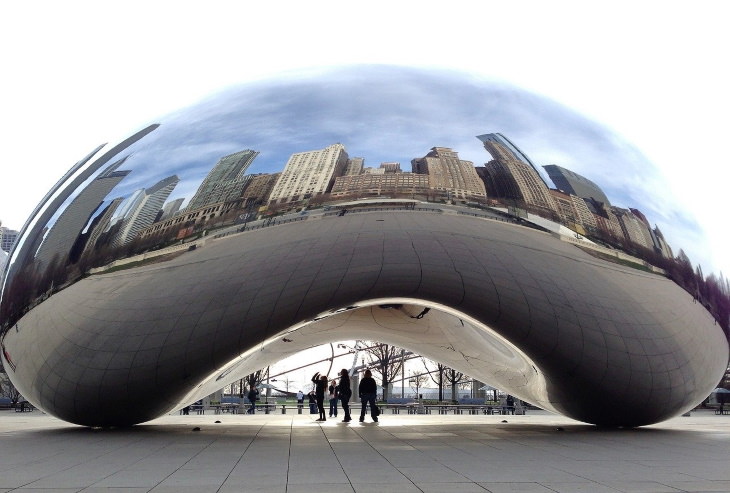1. Venus of Willendorf (c. 30.000-20.000 BC)
For decades, the Venus of Willendorf was considered to be the oldest known sculpture. The 11.1-centimeter-tall (4.4 in) figurine was discovered near Willendorf, Austria, in 1908. The figurine is made of limestone and is tinted with red ochre, and it is believed to be a fertility statue, also known as a "Venus figurine", a common type of statue from the Paleolithic depicting women with exaggerated feminine features.
The Venus of Willendorf is believed to have been created between 30,000 and 25,000 BC, and it is one of the oldest artworks in history. Even though older sculptures have been discovered since the Venus of Willendorf remains the most famous example of Paleolithic art.
2. Bust of Nefertiti by Thutmose (1345 BC)
Nefertiti, the Great Royal Wife of the Egyptian pharaoh Akhenaten, is one of the most famous women in ancient history and a beauty icon even today, more than 3,000 years after her death. To a significant extent, she owes her fame to the famous Ancient Egyptian sculptor Thutmose, who created the famous limestone bust of the Egyptian queen.
The beautiful sculpture was discovered in 1912 in the sculptor's workshop in Amarna, one of the capital cities of Ancient Egypt. Today, the bust is on display at the Neues Museum in Berlin, and it is one of the most reproduced and well known ancient works of art.
3. Terracotta Warriors (3rd century BC)
The Terracotta Army is an enormous collection of terracotta sculptures of 8,000 soldiers, 130 chariots, and 670 horses that depict the mighty army of the First Emperor of China, Quin Shi Huang. The sculptures are an example of funerary art, and they were buried not far from the Emperor's tomb in Xi'an, China, to protect him in the afterlife.
The entire underground mausoleum together with the Terracotta Warriors take up a jaw-dropping territory of 98 square kilometers (38 square miles). Most interestingly, though, the enormous Terracotta Army was only discovered in 1974 by complete accident when farmers were digging a well in the area. Certainly, this was one of the most significant archeological discoveries of the century, and since then, some of the Terracotta soldiers have traveled the world, and word of the Terracotta Warriors has spread far and wide. In 1987, the location of the sculptures in Xi'an, China, was proclaimed a World Heritage Site.
4. Laocoon and His Sons (c. 323 BC – 31 AD)
The sculpture of Laocoon and His Sons is one of the finest and most well-preserved examples of Greek Hellenistic sculpture. The sculpture depicts Troyan priest Laocoon and his sons Antiphantes and Thymbraeus being attacked by sea serpents - a gripping and emotional scene that is sure to touch every viewer's heart and soul.
The Hellenistic sculpture was excavated in 1506 in the vineyard of Felice De Fredis Rome, and placed on public display in the Vatican, where it remains to this day. The artist of the sculpture remains unknown.
5. Venus de Milo (c. 130 BC)
This next famous sculpture is also an example of Ancient Greek art, which is hardly surprising given that it is precisely Hellenistic sculpture that has the biggest influence on both classic European and modern western art. Venus de Milo, a famously armless sculpture of the Greek goddess Aphrodite, has been synonymous with femininity and beauty for centuries and served as inspiration to countless artists, such as Salvador Dali.
The Venus de Milo was found accidentally by a peasant in 1829, who found the sculpture fractured in two pieces. The missing limbs are a common occurrence in statues of the time, by the way, as they are the most fragile part of the sculpture and are at the highest risk of breaking off. Today, the famous marble sculpture stands in the Louvre Museum.
6. David by Michelangelo (1501-1504)
Jumping straight to the most famous Renaissance sculpture seems like a natural continuation of the Hellenistic theme as the primary inspiration of Renaissance artists was Ancient Greek sculpture. We're sure you know all about the famous statue of David, Michelangelo's finest and most famous work.
What you may not have known unless you've seen David live, however, is that the statue is huge - 5.17 meters (17 ft) tall. This is because the statue was originally commissioned for the roof of the Florence Cathedral. The impressive size allowed Michelangelo to depict the sculpture with unbelievable detail in mind, such as bulging veins on David's arms and a collected and calm appearance expressed through his facial features and pose.
7. The Statue of Liberty by Frederic Auguste Bartholdi and Gustave Eiffel (1876-1886)
Lady Liberty needs no introduction either, as the famous New York City statue is pretty much synonymous with American democracy and freedom. Greeting travelers in the New York Harbor, the bronze statue depicts the Roman goddess Libertas, who holds a tablet with the date of the US Declaration of Independence in her left hand and torch in her right hand.
As you likely already know, the famous statue was a gift from France to the United States, and it was built in France and then transported to New York by ship in 1885. Ever since its unveiling in 1886, the famous sculpture has been featured everywhere you could think of, and it's certainly one of the most often reproduced and recognizable sculptures in history.
8. The Thinker by Rodin (designed in 1880, cast in 1904)
Auguste Rodin's 'Thinker' is often compared to Michelangelo's 'David' in terms of its influence on modern art, and it's hardly an exaggeration. Originally, the sculpture was titled 'the Poet and was a part of a composition titled 'The Gates of Hell'.
However, Rodin soon realized that the male figure engulfed in deep thought deserves to be a separate piece, and thus the Thinker was born. Since then, 28 differently sized versions of the statue were cast, and they are scattered throughout the globe both in museums and public places today. The original cast, though, is understandably on display in Paris at The Musée Rodin.
9. The Lincoln Memorial by Daniel Chester French and the Piccirilli Brothers (1920)
From one famous thinker to another, the 16 ft tall (4.9 m) sculpture of the 16th president of the United States, Abraham Lincoln, shows the president in deep contemplation while seated in a chair. The statue is part of the Lincoln Memorial located in the western end of the National Mall in Washington, DC. Since its creation, the statue and the entire memorial complex became a symbol of the Civil Rights Movement in the United States.
10. Maman by Louise Bourgeois (designed in 1999, cast in 2001)
Moving even closer to the art of the present, this giant spider sculpture is also among the largest sculptures ever, standing tall at the intimidating height of 30 ft (9 m). Louise Bourgeois‘ giant spiders are scattered across 7 different locations in the world - from the Guggenheim museum in Bilbao to the Tate Modern in the UK. The sculpture is meant to symbolize the artist's mother and be a depiction of both protection and vulnerability.
As the artist herself explained in a statement, "Like a spider, my mother was a weaver. My family was in the business of tapestry restoration, and my mother was in charge of the workshop. Like spiders, my mother was very clever. Spiders are friendly presences that eat mosquitoes. We know that mosquitoes spread diseases and are therefore unwanted. So, spiders are helpful and protective, just like my mother."
11. Balloon Dog by Jeff Koons (1994-2000)
Everyone can relate to balloon dogs, funny little presents we'd all get at birthday parties, and theme parks when we were kids. What better object could symbolize childhood than balloon dogs? None, and this is likely why Jeff Koons' balloon dog series became an instant hit when the sculptor started making and exhibiting them in the late 1990s and early 2000s.
There are yellow, blue, red, and magenta versions of the sculpture, and all are made of stainless steel with a transparent coating. However, the most well-known Balloon Dog is the orange one, which was famously sold for USD 58.4 million in 2013 at a Christie's auction, breaking the record for the most expensive sculpture ever sold at the time. Fun fact: this record was later beat by yet another of Koons' works titled the Rabbit.
12. Cloud Gate by Anish Kapoor (2004)
The last, but definitely not the least famous sculpture on our list is the Cloud Gate, more commonly known as "the Bean". The sculpture fit the landscape of the Millenium Park in Chicago perfectly, and though it was only installed in 2004, it quickly became the symbol of Chicago. The outdoor sculpture is a mirrored bean-like shape welded seamlessly out of stainless steel and is meant to resemble liquid mercury, and it was created by Indian-born British artist Sir Anish Kapoor.
Please share this article with those who love art!

